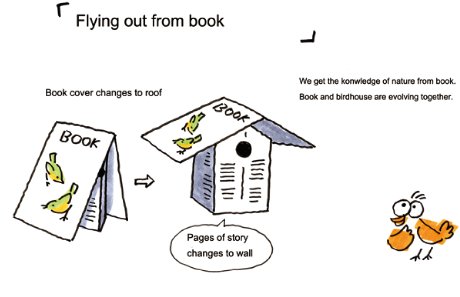| My field is Artificial Life.I study artifacts to learn about life.Often these artifacts are computer programs, however there are many other technologies that are relevant to the study of life, artificial or natural.
was born in Cambridge, Massachu-ssets, USA, in 1948. As a child, I lived and went to school in Lincoln, Mass. which is 20 miles or so west of Boston. I completed my undergraduate education at the University of Arizona in Tucson in 1980. I graduated with a double major in Anthropology and the Philosophy of Science. I bought an Apple-II computer in 1980. It changed my life.
started studying cellular automata, and the works of John von Neumann, Ted Codd, Arthur Burks, John Holland and other early pioneers of what is now called Artificial Life. I was able to create a self-reproducing structure in a cellular-automaton. This was a watershed in my life.
in 1982, I started my graduate education at the University of Michigan in Ann Arbor. I spent 4 years there, completing my course-work. During those 4 years, my two sons Gabriel and Colin were born. I took a post-doctoral position at the Center for
Nonlinear Studies at Los Alamos National Laboratory in 1986, at the invitation of my friend Doyne Farmer. I spent three years at the CNLS, and bought a small adobe house in the Rio Grande valley of New Mexico. Those were good times. I organized the first international workshop on Artificial Life at Los Alamos in September of 1987. Many interesting people came, and that event effectively gave birth to the field of Artificial Life as we know it today. After that, I ran two more Artificial Life conferences in Santa Fe New Mexico in 1990 and 1992, in association with the Santa Fe Institute.
joined the Santa Fe Institute as a Research Professor in 1994. I stayed at the SFI for three years.
After a disagreement over the principles by which the SFI was being managed, I left to start my own company in1997. I closed that company in 2000, and am now working as a freelance scientist. I am still pursuing research in Artificial Life.
still live in the Rio Grande Valley in New Mexico. New Mexico is very beautiful - in a rugged and desolate sort of way - and still mostly wild.
it seems to suit my soul. | | |
| -but it is the emptiness inside
that holds whatever we want. tao te ching
A birdhouse is an artifact.
An artifact is something made by man, rather than by nature.
uildings, roads, cities, airplanes, newspapers, and guitars are artifacts.
A book is an artifact.
Our knowledge is an artifact.
It is on the basis of our knowledge
that we act in nature, and, in turn, it is our experience in nature that has shaped our knowledge.
My contribution to the Birdhouse Project is a book that opens out into a birdhouse.
The book represents our knowledge of nature.
The birdhouse represents our experience in nature.
Opening the book into a birdhouse represents humans acting in nature on the basis of our knowledge.
Closing the birdhouse into a book represents the incorporation of our experience in nature back into our knowledge.
The book and the birdhouse have co-evolved.
The book has shaped the birdhouse, and the birdhouse has shaped the book.
Our knowledge has shaped nature, and nature has shaped our knowledge.
/Who is the potter, pray, and who the pot? The Rubaiyat of Omar Khayya | | |



